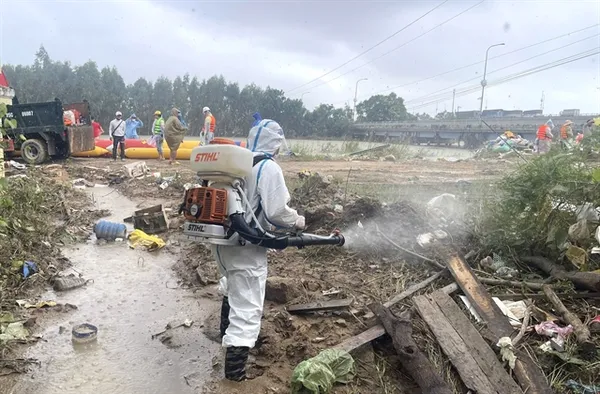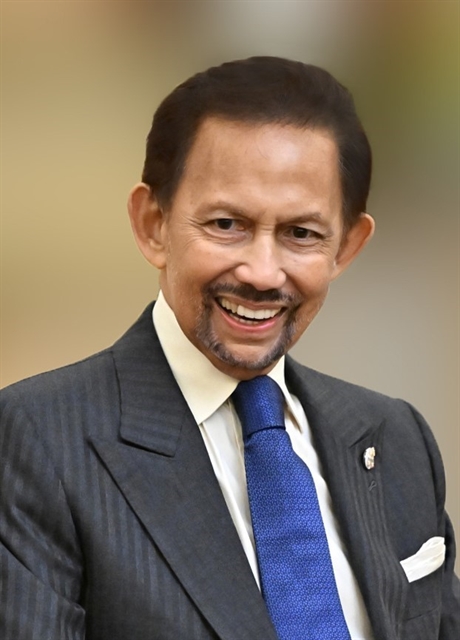 Politics & Law
Politics & Law


|
| Medics conduct medical evacuation training during the integrated field exercise for Vietnamese and Indian peacekeeping forces in Hà Nội on Thursday. — VNA/VNS Photo Trọng Đức |
HÀ NỘI — Việt Nam's Department of Peacekeeping Operations and their Indian counterpart held an integrated field exercise in Hà Nội on Thursday as part of the Việt Nam–India Bilateral Exercise (VINBAX) 2025.
The exercise includes three scenarios and aims for participating units to master the protocols, skills and coordination mechanisms required for an integrated response in UN peacekeeping missions.
They must demonstrate accurate standard procedures and strong inter-unit collaboration as well as ensure the safety of personnel, weapons and equipment.
In the first scenario, engineer troops conduct mine detection, explosive ordnance disposal and casualty evacuation.
They are tasked with surveying and clearing explosive ordnance, including immovable anti-personnel mines that must be neutralised on site, near their base – a location where UNICEF plans to build a school to support local authorities and communities.
Forces were divided into four teams: detection and disposal, security, medical and canine units.
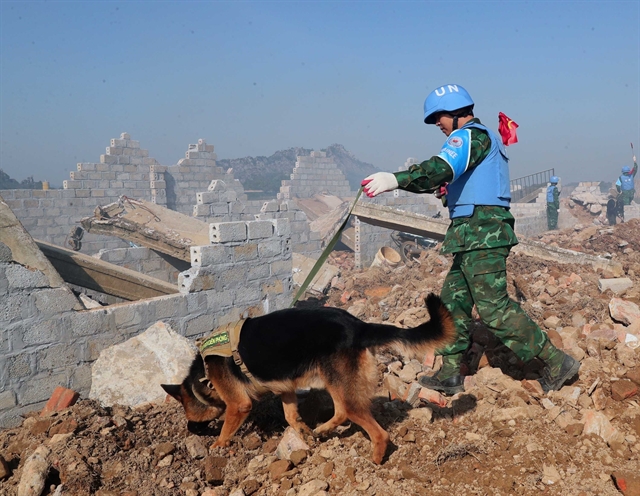
|
| A police dog searches for 'victims' during the joint exercise. — VNA/VNS Photo Trọng Đức |
As part of the training, one soldier is 'injured' during the search and clearance process. Once the area is confirmed safe, medical personnel evacuate, provide first aid and escort the injured soldier to a level-1 field hospital.
In the second scenario, the engineer unit has to disperse a crowd accusing UN staff of sexual exploitation and abuse, and protect the base.
A group of three people demand to meet the engineer unit commander to file a complaint about alleged sexual harassment and violence against a woman.
Soon after, around 20-30 people 'armed' with potentially lethal objects gather at the base, shouting demands for the UN force to leave, asking for food or demanding justice for the alleged victim. Protesters then move toward the main gate, breaking the fence and throwing objects into the compound.

|
| A crowd stages a fake protest in front of the engineering unit's base as one of the scenarios included in the field exercise. — VNA/VNS Photo Trọng Đức |
At this point, the security detachment is on standby. Meanwhile, about 10 unidentified individuals armed with sticks and sharp objects infiltrate the crowd. Some of them throw 'incendiary devices' into the base, injuring two soldiers.
Assessing that the situation is escalating and the base is at risk, higher command deploys the security detachment to the main gate with an armoured vehicle to suppress 'extremists'.
The level-1 field hospital treats the 'injured', while logistics personnel extinguish the fire. The commander of the engineering unit and two military observers request a meeting with local authorities.
During the meeting, the complainant cannot provide convincing evidence, while the unit presents clear arguments refuting the allegations. Local authorities instead ask the unit to help repair a route connecting the main road and a school.
The engineering unit acknowledges the request and agrees to consider assistance at an appropriate time, stressing that any support would be purely humanitarian and unrelated to the allegations.

|
| Representatives of the engineering unit and local authorities hold a meeting to address their conflict as part of the field exercise. — VNA/VNS Photo Trọng Đức |
In the third scenario, the engineering unit works with other forces to rescue 'victims' of a magnitude-6 earthquake and collapsed structures, including providing emergency aid and conducting medical evacuation by air. Local authorities report that a UNICEF-supported hospital has collapsed with victims trapped inside.
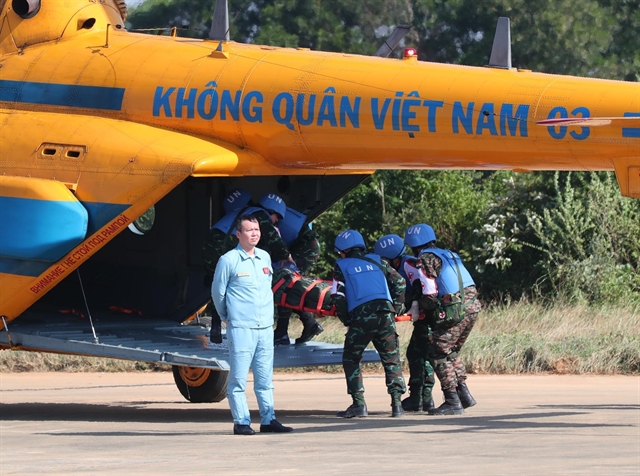
|
| Medics and peacekeeping officers perform medical evacuation by air during the joint exercise. — VNA/VNS Photo Trọng Đức |
This scenario requires close, well-coordinated collaboration and a high degree of technical expertise. Rescue forces include reconnaissance, search and rescue and canine units, along with medical personnel. After receiving the mission, they move to the scene and use drones to gain a preliminary understanding of the situation.
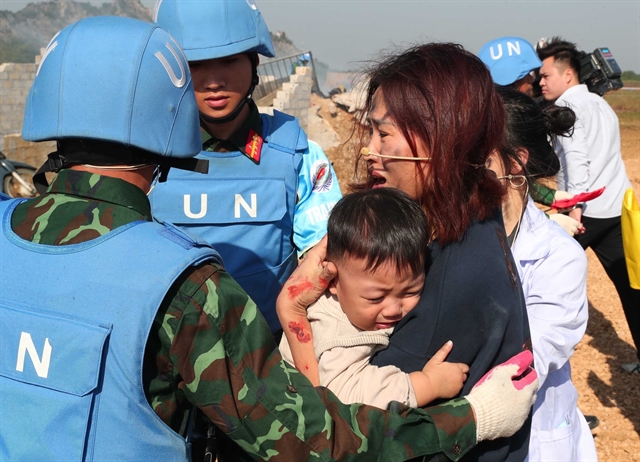
|
| Peacekeeping officers help earthquake 'victims' during the field exercise in Hà Nội. — VNA/VNS Photo Trọng Đức |
After scouting the site, the teams urgently deploy equipment to rescue trapped 'victims', using police dogs to locate and mark suspected positions. Once victims are found, rescue teams create access routes, assess injuries and coordinate with medics to bring them to safety.
For critically injured patients, the mission headquarters dispatches a helicopter and an aeromedical evacuation team for emergency evacuation. The level-1 field hospital coordinates with the evacuation team to conduct emergency aid and airlift procedures. — VNS




